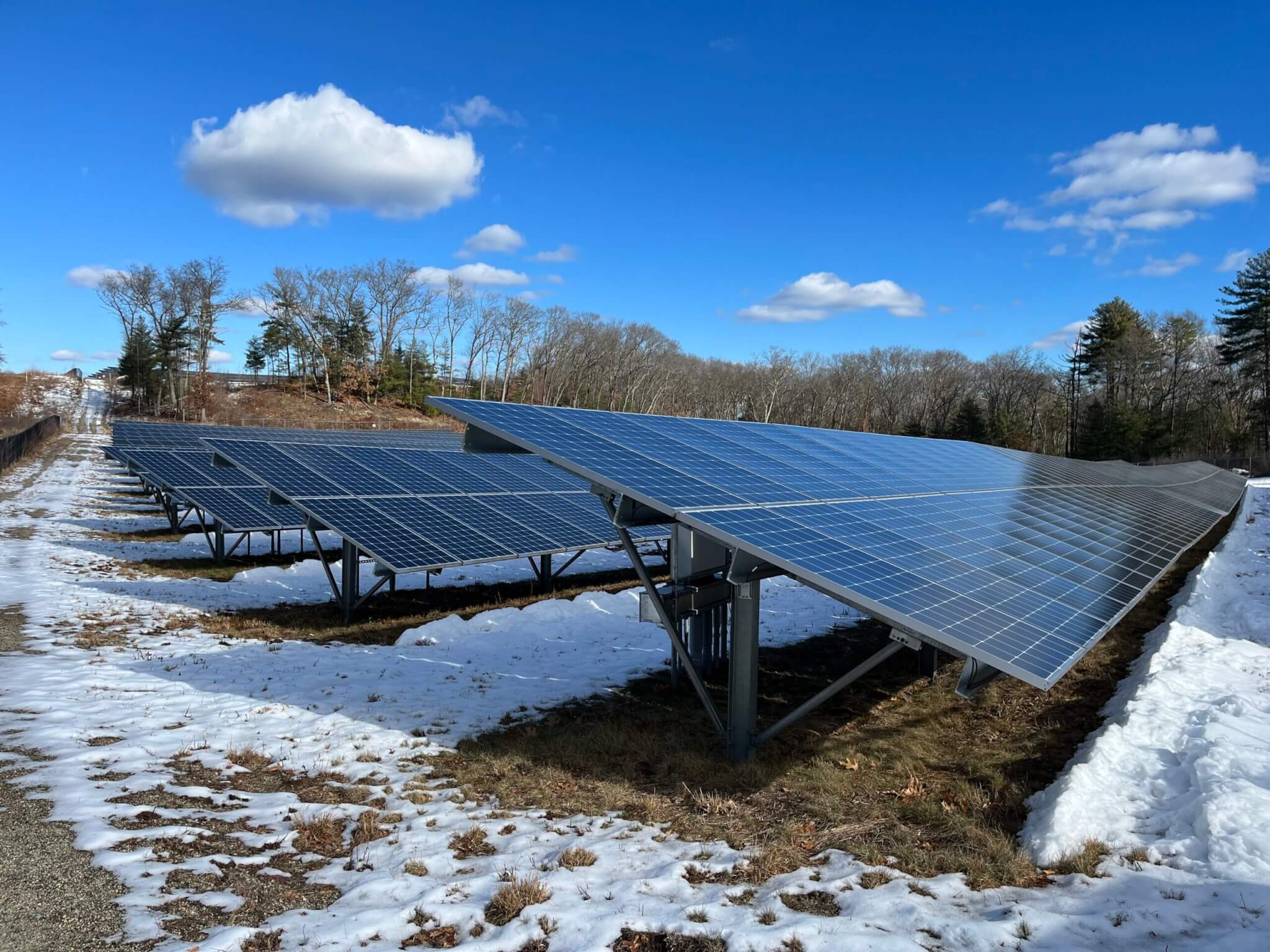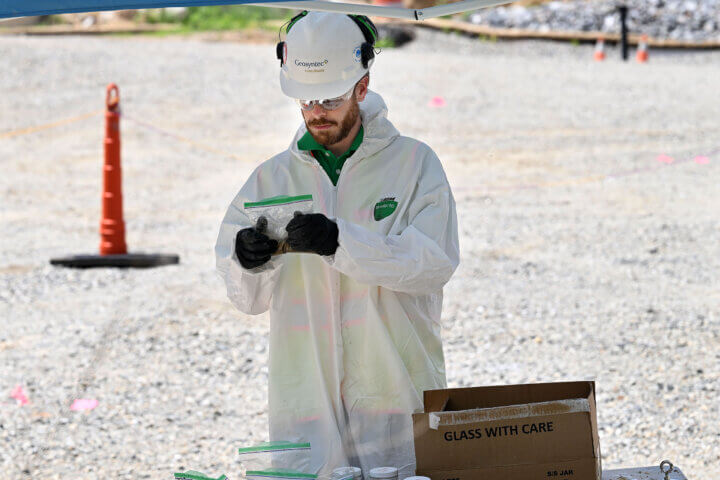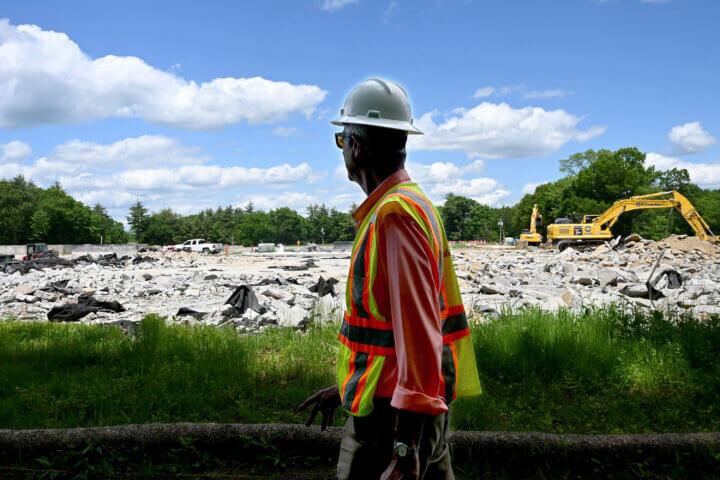Down the street along the Assabet River off Route 62 is a massive solar array; rank upon rank of large panels, quietly generating electricity for the town.
It’s one of two big arrays – the second stands sentinel over the old landfill off Route 2 across from Walden Pond. Together, they produce about 7.5 megawatts of clean, renewable energy.
“One megawatt equals one million watts or 1,000 kilowatts, roughly enough electricity for the instantaneous demand of 750 homes at once. That number fluctuates because electrical demand changes based on the season, the time of day and other factors,” according to the California Independent Systems Operator
The West Concord array went online in 2017, the most recent large solar array built on Concord-owned land. Last year at Town Meeting, residents voted to direct the Light Plant to craft a plan for the future of Concord solar energy. Now, almost a year later, a draft outline has been released. For Concord resident Dean Banfield, that pace is too slow, so, at Town Meeting in April, Banfield will have another warrant article, focused on speeding the move to renewable energy.
This article would create a task force of five people, a light plant designee, a member of the Climate Action Advisory Committee and three residents, to push Concord forward on the clean-energy front.
“CMLP has not made sufficient progress in creating a plan. This article requests that the Select Board appoint a task force to finish the strategic plan that the light plant has not completed,” according to the article summary.
The issue is one of perception.
“Since 2017, there has been no new solar capacity built on Concord land. If you look around, all the towns that border us have done stuff since 2017,” Banfield said.
Banfield was quick to say the lack of visible solar capacity does not mean Concord is not a thought-leader on the issue. According to Banfield, through the trading of clean energy credits, the town has managed to create a largely clean-energy system.
On its website, the light plant touts clean energy efforts. The plant buys power from third-party generators and has, according to the site, been focused on decarbonizing sources. The goal: 100 percent renewable power by 2030.
The U.S. Department of Energy has set a goal of establishing a decarbonized electricity sector by 2035.
The decarbonization goal is admirable but putting up more solar arrays accomplishes more than just that base goal of building clean energy infrastructure. It has an educational component as well, combating apprehension about how the solar panel farms look.
If, for example, a solar array is built in the back of a school parking lot, students will see it and, over time, the conversation about clean energy will become normalized, Banfield said.
“I guess there’s the moral question: Do we want to export our ugliness to a hillside in Vermont or put the solar panels in the public sphere to show we are moving in the right direction?” he said.
There are myriad places in town to put the panels, he said. The roof of the Beede Center, which he cites as the largest electricity consumer in town, was one example. The roof of the public works building is another.
There is also the possibility of forging partnerships with private entities, he said, citing Emerson Hospital as one possibility.
“My goal is to dig back in and find places in town that are acceptable and appropriate,” he said.
Banfield is confident the article will pass. He called the idea of clean energy “Mom and apple pie” to Concord residents.
Town Meeting is April 30..






